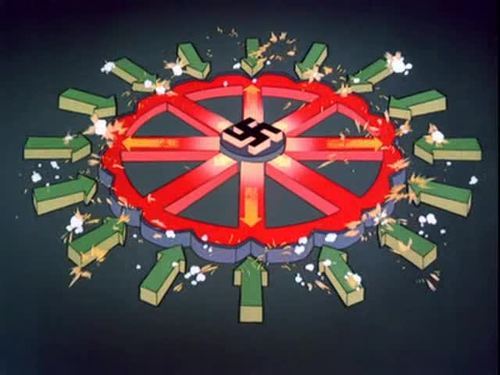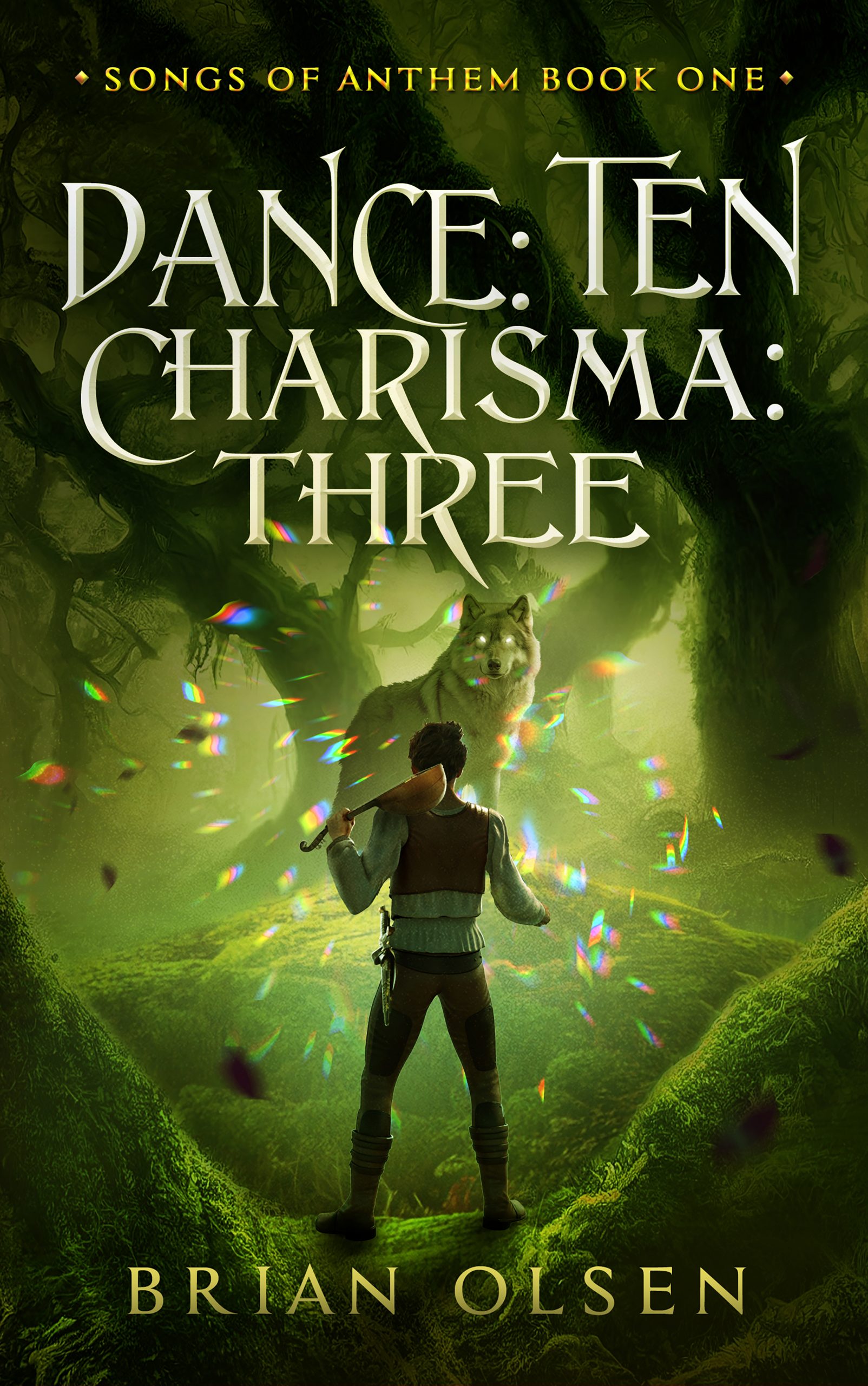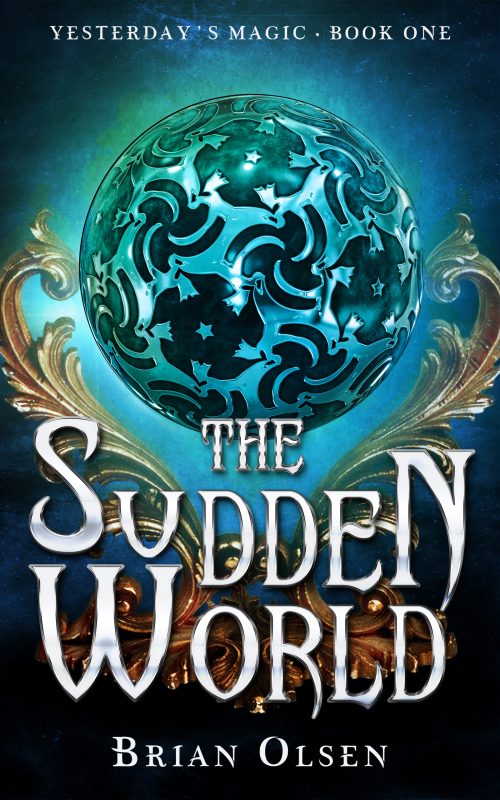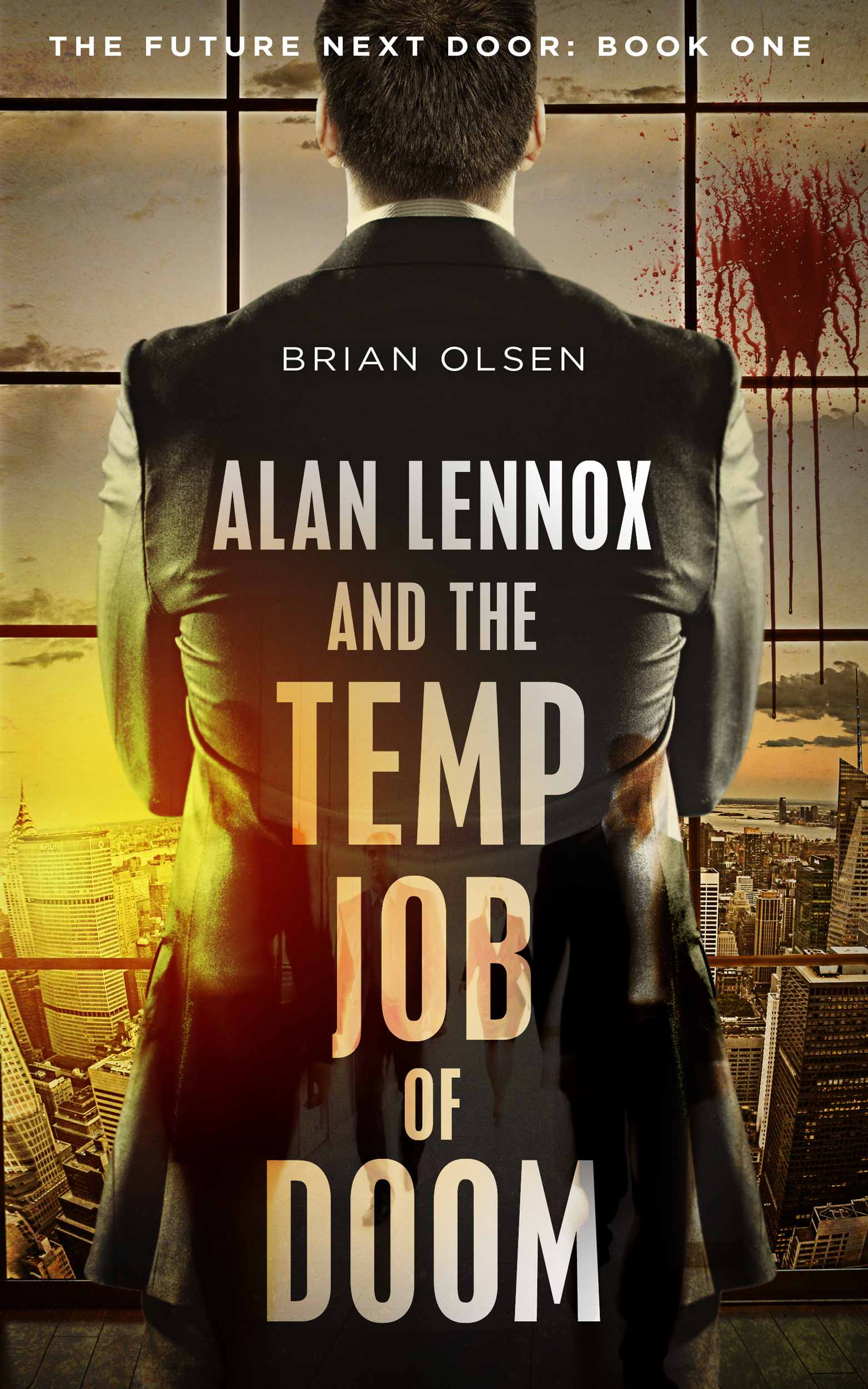Victory Through Air Power (1943) is an odd film. It’s the first example of wartime propaganda produced by Disney. I had never seen it before – hadn’t even heard of it until I was deciding which movies I was going to watch for this series of posts. Apart from the opening sequence, it wasn’t ever shown on TV and it wasn’t released on home video until 2004, so it’s fairly unknown, despite it being only the eighth Disney feature. It really is blatant, unashamed propaganda – it’s based on the book of the same name by Major Alexander P. de Seversky, who appears in the film in the live action sequences giving a lecture to the American people and, most particularly, to military and government leaders, about the necessity of increasing America’s commitment to develop long-range bombing and of building a better fleet of long-range bombers. That’s it. That’s what the whole movie’s about. Like I said, it’s an odd film.
- The opening sequence, “History of Aviation,” is the only part of the film that was occasionally shown over the years since this film’s release, since it stands on its own and isn’t quite as propaganda-y as the rest. It’s a cartoon telling us – well, the history of aviation. And it’s very cartoony – although the narration is straightforward, there’s a lot of humor in the animation. You could replace Orville Wright with Goofy and I’d believe it’s another installment in his “How To” series. Overall, this segment is pretty awesome. It’s entertaining and even educational.
- There’s a close-up on a newspaper. The headline we’re meant to see says, “U.S. War Dept. Plans Air Corps,” but the headline beneath that reads “Rich Filipino Brings Natives Here.” I think I’d rather watch that cartoon.
- According to “History of Aviation”, pilots in the first world war were quite polite to each other at first, even friendly. The very first dog fight began when a French pilot snapped a picture of his German counterpart as their planes were passing, but when the French pilot developed the film, the German pilot was making a nasty face at him. So the next time they passed the French pilot threw a brick at him. I am beginning to doubt the historical accuracy of this cartoon.
- Into the first live action sequence, and Seversky is wasting no time. He starts right off with the great risk America is at of being bombed by the Germans. This was released just a few months after Pearl Harbor, by the way. The filmmakers know how to play to the fears of their audience – essential for any good piece of propaganda. And this is pretty effective propaganda. It’s very clear and persuasive. There’s an interesting segment about how Germany’s dominance of the air led to their successful invasions of France and Norway.
- The music is amazing. The orchestral score keeps dropping in bits from “La Marseillaise,” “Rue Brittania,” and “America the Beautiful” (to name just a few) whenever we’re meant to get teary about those songs’ respective countries. It works. (The film was nominated for an Oscar for Best Score.)
- Hey, that silhouette of a WWII tank kind of looks like a Dalek! Oh…wait…I probably have that backwards…
- This may come as a shock, but the segment on the importance and logistics of supply lines is a little dull.
- There are a lot of impressive, effective images in this movie. A champagne bottle smashes against a supply ship, launching it. Cut to: a torpedo hits the ship in the exact same spot, sinking it.
- There’s a symbolic bit where a circle with a swastika at the center, representing the German front, is besieged on multiple sides by arrows, representing the Allied forces, trying to burst through the circle to reach the war machine factories at the center, when one of the hypothetical long-range bombers flies straight through and drops a bomb which explodes in the center and then all the arrows which couldn’t puncture the circle scatter in all directions. It reminds me so much of a cartoon from a high school health class about a bunch of sperm trying to fertilize an egg. (Minus the swastika, hopefully.)
- The movie ends with some severe war porn – animated shots of American planes bombing the hell out of Japan, the entire country’s infrastructure destroyed. There are no people shown but it’s really quite disturbing. While I’m sure it was meant to inspire the people of 1943 who had just endured such a frightening sneak attack on American soil, today the delight we’re meant to take in the destruction of our enemies is rather chilling. But then there’s a giant eagle and it’s fighting an evil octopus, and the eagle kills the octopus which releases the daggers it had been plunging into the Pacific islands with its tentacles and then the eagle lands on a post and turns to gold and the post is a flagpole and the American flag is waving and The End. What the hell did I just watch?



